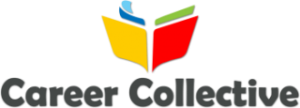Those educational institutions that develop their promotions around the requirements of their learners, also known as student-centric institutions, are more closely arranged with the overall needs of their aim for viewers. To be truly student-centric, one thing that educational institutions should focus on is creating and using information from probability to placing to be able to support possibilities. By determining kids’ requirements early on and understanding their needs, educational institutions can proactively perform employment and preservation strategies before problems impact both learners and the college itself.
So, how does a Keystone college start to identify features of successful learners and develop profiles for keystone students?
Step 1: Evaluate current student possibility data
Both market and psychographic information are available – educational institutions just need to be persistent about collecting it. For example, a profile could be built to include a prospect’s age, employment position, marital life, activities/interests, professional goals, and preferred learning style.
Step 2: Allocate threat levels to each probability characteristic
It is important to figure out which aspects weigh bulkier when determining the likelihood of successfully applying, starting and finishing an individual. Schools will need to take into account all of a prospect’s risks and their calculated threat to be able to figure out an overall threat. For example, someone with good profession ambitions would most likely cause a “low” threat, yet that same probability could be adjusting and not stay in one place for a long time, appearing a “high” threat. When taking all of the prospects’ risk factors into consideration, his/her overall risk factor would be considered “medium.”
Step 3: Assign a complete profile to a prospect and determine action plans as necessary
Using the profiles you’ve created, you can move groups of prospects into each category with an overall risk level associated with each prospect. Schools should create corresponding action plans and prioritize admissions representative’s assignments accordingly.
Step 4: Continue to monitor, evaluate and update prospect action plans
Even after students are enrolled, data can change. Schools need to have the processes in place to make sure that any demographic, behavioral or education related information that does change, doesn’t impact that student’s chances for a successful program start.

Step 5: Once a student starts a program, continue to monitor triggers to drive actions
Just because someone moves from prospect to student doesn’t mean the school should stop referencing and updating their profile. If anything, it is more important than before. Schools should put trigger tasks into place to drive any necessary actions if red flags arise. The student services team needs to be ready to take action, whether a student now requires financial aid, counseling or any additional outreach or support.
Step 6: Make institutional decisions based on gaps between offerings and student needs/demands
At this point in the process, schools will have identified gaps in their ability to deliver on action plans. For example, perhaps there’s a group of high risk student prospects that are simply high risk due to an inability to get to an on-ground class. Making quick, timely decisions to offer that class online would move those prospects into a medium to low risk category and increase a school’s recruitment efforts.
Step 7: Constantly update and evaluate student profiles
It’s important to remember to consistently evaluate and update profiles, especially when adding new programs or delivery models. For example, perhaps a school created the initial profiles before adding online delivery. Once online programs become available, some medium to high risk student prospects (those lacking the flexibility to come to campus) may move into the low risk category.
If done correctly, the impact of creating and implementing student profiles will be increased conversion and stronger retention. Schools will better understand their target market, and will be better prepared to make informed decisions that will support student success, which in turn, contributes to a school’s own success.




